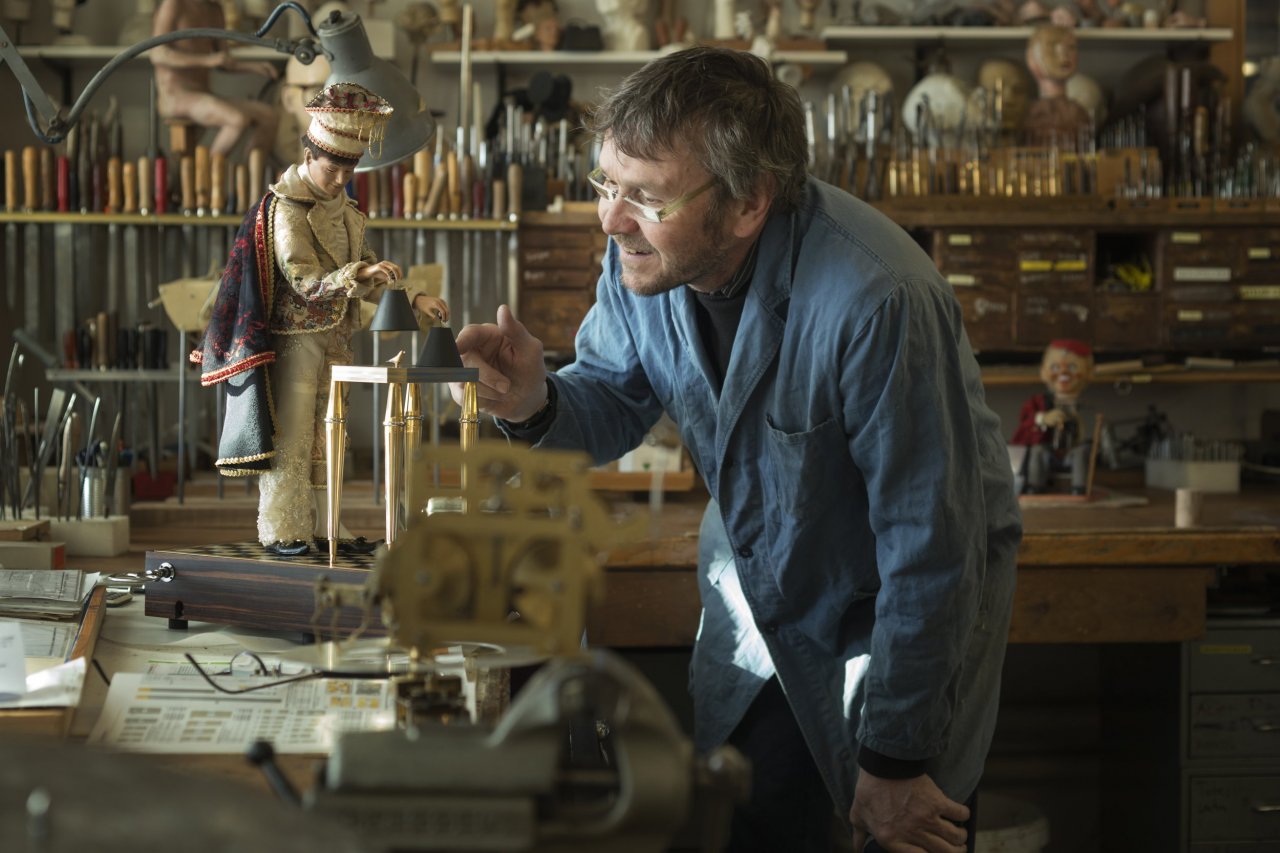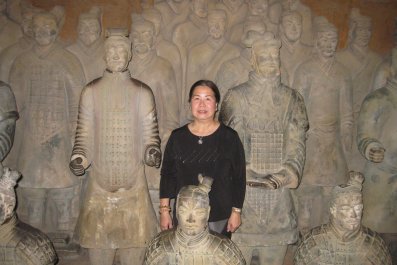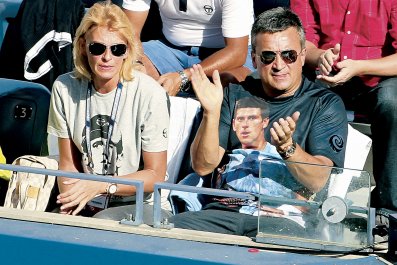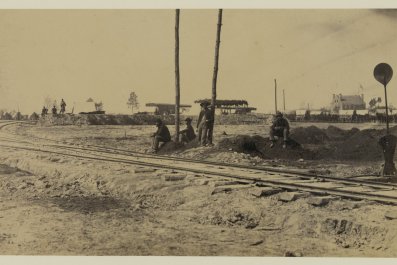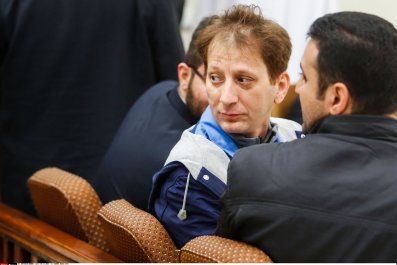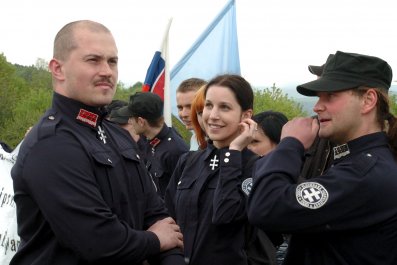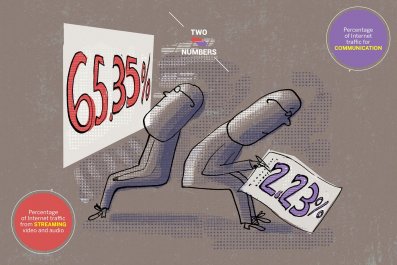The succession of forest-clad crags disappearing into the distance marks the beginning of the Jura Mountains, the rocky spine that divides France and Switzerland. It is the sort of landscape that inspired the artists and poets of the Romantic era, and it is all too easy to see oneself as the small figure in the foreground of a Caspar David Friedrich painting gazing in wonder at these forbidding peaks.
As well as foreboding, the Jura Mountains are cold. As you're driving up the snaking succession of bends carved into the mountainside, it becomes colder with every hairpin turn of the road; the precipitation no longer falls as drops of water but in big fat flakes of snow. More than half a mile above sea level, we enter a village, a small cluster of steeply pitched, red-tiled roofs clinging to a sheltering shoulder of rock. The streets of the village are empty, unsurprising given the temperature and the now thickly falling snow.
I have come to the remote Swiss mountain village of Ste.-Croix to meet the man who brought the Russian poet Alexander Pushkin back to life. The snowy setting is appropriate: On January 27, 1837, Pushkin climbed out of his sleigh in a field outside St. Petersburg into knee-deep snow that had to be trampled down so the famous poet could fight a duel with the man who had tried to seduce his wife. Pushkin lost. Two days later, the great poet was dead, gone to an early grave at 37 and mourned by an empire.
François Junod, a man in his mid-50s with kind eyes, a beard, a thatch of curling gray hair and a pullover of the same hue, is the genius who has resurrected Pushkin. The atelier into which he welcomes me has something of the laboratory, the machine shop, the watchmaker's workshop, the alchemist's lair and the anatomy classroom about it; a human skeleton in a feathered hat is the first thing the eye is drawn to. Then I notice the alarmingly lifelike human limbs, crescent moons and animal heads that dangle from the ceiling like so much charcuterie. There is a wall whose shelves support what appear to be dozens of human heads—some doll-like and others life-sized; some with wigs, others hatted; and one wearing what looks like a lampshade trying to be an Ottoman headdress.
Junod is a maker of automata—mechanical devices that move and look like human beings. Since childhood, he has been fascinated by mechanical objects of all sorts. That fascination has remained with him to this day, driving him to create ever more elaborate moving figures—robots almost, who (and it is hard not ascribe human characteristics to these clockwork creations) perform tasks that one watches in rapt wonder. My favorite is dressed like a character Sinbad might encounter and sits on a rippling magic carpet pouring himself coffee, drinking it and then pouring himself another cup.
The large house in which Junod's workshops are located is piled high not just with tools and body parts but also with machinery from all eras and for all functions. In the space of a few minutes, he may truffle out a 19th-century mechanism developed for a singing bird, explain the attraction of an immense 17th-century tower clock movement that dominates one side of the building's barn-sized attic, and eulogize about such humble devices as a mid-20th-century sewing machine. Junod's mind, inspired by the machinery that surrounds him, darts across the centuries, like some time-traveling magpie seizing upon bright ideas, whether they are to be found in the mechanism of a pinball machine or a glazed and mirrored mechanical piano of the sort that were part of the furniture of the maisons closes of Belle Époque Paris.
His is a calling that requires a unique blend of abilities: the skills of a watchmaker, an engineer and an artist. As well as being immersed in the mechanical minutiae of connecting rods, gearing systems, cogs and strange, asymmetrical cams, he is equally preoccupied with artistic effect. He trained as a sculptor at the École des Beaux Arts in Lausanne, Switzerland, an education that helped him to better replicate the human features he brings to mechanical life.
His is the sort of mind that spends much of its time in the 18th and 19th centuries, when the mechanical figures that could mimic human or animal actions were viewed as objects of wonder. One of the greatest makers during this golden age of the automaton was also Swiss, Pierre Jaquet-Droz, a man whose name still lives on today as a watch company. Droz was famed for his doll-like mechanical creations, the most complex of which was the writer—a child seated at a desk who could write a sentence of three or four dozen characters. It was deemed at the time to be a marvel and rightly so, because it was a fiendishly complicated mechanism that moved the writer's pen across the page. That movement was accompanied by various other actions, including the automated writer filling his pen with ink.
Today, of course, we live in a world that has a tendency to be blasé, so in 2003 Junod embarked upon creating not merely a writing boy but a writing poet. (The choice of subject was also influenced by the wife of a Russian client of Junod's, who was passionate about Pushkin.) The result, which Junod completed in 2010, is a machine made up of 3,548 components that combine to create his Pushkin, which can write 1,400 randomized snatches of the Russian poet's verse. It is an immense achievement; the spine of the Pushkin figure consists of a stack of 88 differently shaped cams that interact to create the words.
"It should be in a museum," says Junod of his creation, and he is right. However, it currently resides in a private collection in Palo Alto, California, and there is a pleasing irony in the fact that in a house somewhere in Silicon Valley is an item of "artificial" intelligence that would have been familiar a quarter of a millennium ago.
Junod respects the privacy of his clients, both private and commercial (sometimes watch companies come to him to realize complicated mechanical projects), so he is discreet about what he is working on next. But there is a clue in the features of one of his automata currently under construction. The flowing, snowy hair and beard, the fissured features and beak-like nose are unmistakably those of Leonardo da Vinci. Having tackled poetry, Junod, it seems, is aiming to capture the essence of the Renaissance's greatest mind in wheels, springs, levers, rods and cams.



